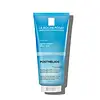What's inside
What's inside
 Key Ingredients
Key Ingredients

 Benefits
Benefits

 Concerns
Concerns

 Ingredients Side-by-side
Ingredients Side-by-side

Aloe Barbadensis Leaf Water
MaskingWater
Skin ConditioningGlycerin
HumectantAlcohol Denat.
AntimicrobialPEG-150 Distearate
EmulsifyingPolyglyceryl-10 Eicosanedioate/Tetradecanedioate
Skin ConditioningDiglycerin
HumectantCannabis Sativa Seed Extract
EmollientOpuntia Ficus-Indica Flower Extract
Skin ConditioningPrunus Avium Flower Extract
Skin ConditioningAgave Tequilana Leaf Extract
AstringentSodium Hyaluronate
HumectantNiacinamide
SmoothingSorbitol
HumectantPullulan
Inositol
HumectantBetaine
HumectantCarbomer
Emulsion StabilisingMaltose
MaskingXylitol
HumectantSodium Hydroxide
BufferingPvp
Emulsion StabilisingPropylene Glycol
HumectantPanthenol
Skin ConditioningVegetable Amino Acids
Skin ConditioningSodium Phytate
Citric Acid
BufferingAlcohol
AntimicrobialBenzoic Acid
MaskingSodium Benzoate
MaskingDehydroacetic Acid
PreservativeBenzyl Alcohol
PerfumingPotassium Sorbate
PreservativePhenoxyethanol
PreservativeAloe Barbadensis Leaf Water, Water, Glycerin, Alcohol Denat., PEG-150 Distearate, Polyglyceryl-10 Eicosanedioate/Tetradecanedioate, Diglycerin, Cannabis Sativa Seed Extract, Opuntia Ficus-Indica Flower Extract, Prunus Avium Flower Extract, Agave Tequilana Leaf Extract, Sodium Hyaluronate, Niacinamide, Sorbitol, Pullulan, Inositol, Betaine, Carbomer, Maltose, Xylitol, Sodium Hydroxide, Pvp, Propylene Glycol, Panthenol, Vegetable Amino Acids, Sodium Phytate, Citric Acid, Alcohol, Benzoic Acid, Sodium Benzoate, Dehydroacetic Acid, Benzyl Alcohol, Potassium Sorbate, Phenoxyethanol
Water
Skin ConditioningOctocrylene
UV AbsorberPropylene Glycol
HumectantGlycerin
HumectantCyclopentasiloxane
EmollientTitanium Dioxide
Cosmetic ColorantButyl Methoxydibenzoylmethane
UV AbsorberDrometrizole Trisiloxane
UV AbsorberTerephthalylidene Dicamphor Sulfonic Acid
UV AbsorberTriethanolamine
BufferingIsopropyl Palmitate
EmollientStearic Acid
CleansingVp/Eicosene Copolymer
Dimethicone
EmollientAcrylates/C10-30 Alkyl Acrylate Crosspolymer
Emulsion StabilisingAluminum Hydroxide
EmollientCarbomer
Emulsion StabilisingDisodium EDTA
Glyceryl Stearate
EmollientGlycine Soja Oil
EmollientHydroxypropyl Methylcellulose
Emulsion StabilisingMethylparaben
PreservativePEG-100 Stearate
Phenoxyethanol
PreservativePropylparaben
PreservativeStearyl Alcohol
EmollientTocopherol
AntioxidantWater, Octocrylene, Propylene Glycol, Glycerin, Cyclopentasiloxane, Titanium Dioxide, Butyl Methoxydibenzoylmethane, Drometrizole Trisiloxane, Terephthalylidene Dicamphor Sulfonic Acid, Triethanolamine, Isopropyl Palmitate, Stearic Acid, Vp/Eicosene Copolymer, Dimethicone, Acrylates/C10-30 Alkyl Acrylate Crosspolymer, Aluminum Hydroxide, Carbomer, Disodium EDTA, Glyceryl Stearate, Glycine Soja Oil, Hydroxypropyl Methylcellulose, Methylparaben, PEG-100 Stearate, Phenoxyethanol, Propylparaben, Stearyl Alcohol, Tocopherol
 Reviews
Reviews

Ingredients Explained
These ingredients are found in both products.
Ingredients higher up in an ingredient list are typically present in a larger amount.
Carbomer is a polymer of acrylic acid. Its main role is to create a gel consistency.
A high amount of carbomer can cause pilling or balling up of products. Don't worry, most products contain 1% or less of carbomer.
Glycerin is already naturally found in your skin. It helps moisturize and protect your skin.
A study from 2016 found glycerin to be more effective as a humectant than AHAs and hyaluronic acid.
As a humectant, it helps the skin stay hydrated by pulling moisture to your skin. The low molecular weight of glycerin allows it to pull moisture into the deeper layers of your skin.
Hydrated skin improves your skin barrier; Your skin barrier helps protect against irritants and bacteria.
Glycerin has also been found to have antimicrobial and antiviral properties. Due to these properties, glycerin is often used in wound and burn treatments.
In cosmetics, glycerin is usually derived from plants such as soybean or palm. However, it can also be sourced from animals, such as tallow or animal fat.
This ingredient is organic, colorless, odorless, and non-toxic.
Glycerin is the name for this ingredient in American English. British English uses Glycerol/Glycerine.
Learn more about GlycerinPhenoxyethanol is a preservative that has germicide, antimicrobial, and aromatic properties. Studies show that phenoxyethanol can prevent microbial growth. By itself, it has a scent that is similar to that of a rose.
It's often used in formulations along with Caprylyl Glycol to preserve the shelf life of products.
Propylene Glycol is an odorless, colorless liquid. As a humectant, it helps skin retain moisture. It also aids in delivering active ingredients.
Another role of this ingredient is preventing a product from melting or freezing. Propylene glycol also adds antimicrobrial properties to a product, elongating product lifespan.
This ingredient is considered an organic alcohol and commonly added into both cosmetics and foods.
Those with sensitive skin or conditions may develop a rash when using this ingredient.
Learn more about Propylene GlycolWater. It's the most common cosmetic ingredient of all. You'll usually see it at the top of ingredient lists, meaning that it makes up the largest part of the product.
So why is it so popular? Water most often acts as a solvent - this means that it helps dissolve other ingredients into the formulation.
You'll also recognize water as that liquid we all need to stay alive. If you see this, drink a glass of water. Stay hydrated!
Learn more about Water